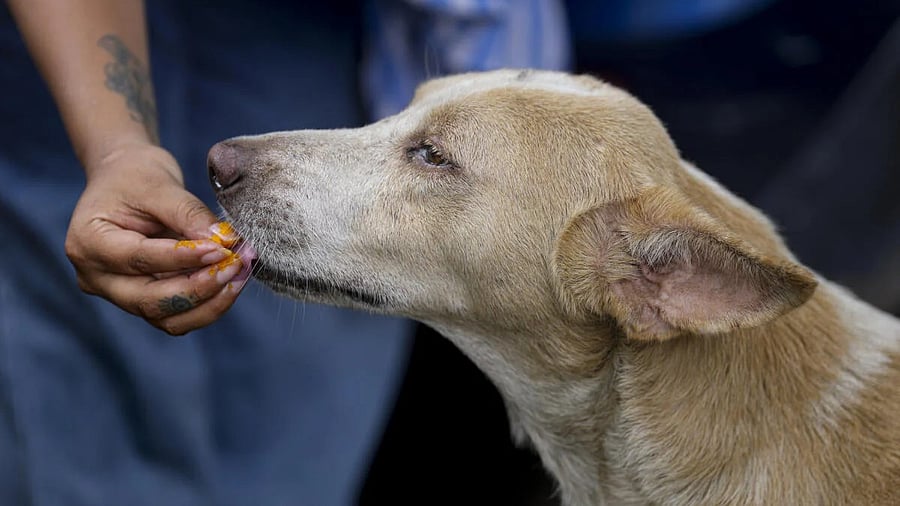
An animal lover feeds sweets to a stray dog after the Supreme Court's (SC) verdict on the strays, at Jantar Mantar, in New Delhi, Friday, Aug. 22, 2025. The SC on Friday modified its August 11 direction prohibiting release of stray dogs from dog shelters in Delhi-NCR, and said the picked up canines be sterilised, vaccinated and released back in the same area.
Credit: PTI Photo
The Supreme Court has done well to modify its earlier order on stray dogs, widely seen as inhuman and unrealistic. The order of the three-judge bench has improved on the direction of the two-judge bench and taken a balanced view of the problem. The earlier order had sought to find a permanent solution, mandating relocation of all stray dogs in the Delhi-NCR region to shelters. This would not have provided a solution because other dogs would have taken the place of the dogs removed from the streets. The court has now taken a more pragmatic and compassionate view. The court said dogs on the streets should be vaccinated and sterilised and released back into their localities but those with rabies or aggressive behaviour should be immunised and kept in shelters.The court also banned feeding of stray dogs in public spaces and ordered dedicated areas to be set up for the purpose.
The new order accepts the reality of the danger posed by street dogs and at the same time addresses the concerns of animal lovers. Animal Birth Control (ABC) rules already exist and they only need to be implemented effectively. The court’s latest order has an expanded scope and covers all states and union territories. It has asked the municipal authorities to give a full picture of the resources available with them for effective action under the ABC rules, including the number of pounds, veterinarians, dog-catching personnel, and cages and vehicles. Many civic bodies do not have the infrastructure to handle the stray dog problem in accordance with the directions of the court. Rounding up dogs on the street, vaccinating and sterilising them, and releasing them back into their localities involves effort, human resources and money. The existing rules prescribe the procedure but it is not followed.
Delhi has about 10 lakh stray dogs. The country has millions of them. Civic bodies will have to scale up their efforts and they need help to implement the order. Creating public feeding spaces for dogs and publicising the locations will not be easy. The court has banned feeding of dogs in public spaces but this will also take time to enforce. The question is whether people will take the trouble to go to the designated place to feed the dogs. It is also not clear how ‘’aggressive’’ dogs are defined. One major solution to the stray dog problem is proper management of solid waste. This should receive greater attention than it does now. The court’s order is welcome because it has recognised the need for compassion in the treatment of animals.
